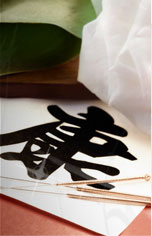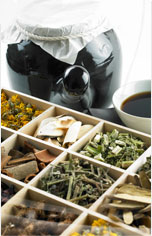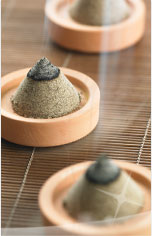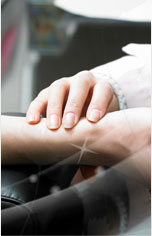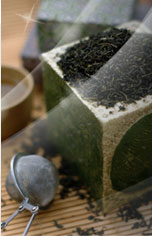| |
About Traditional Chinese Medicine (TCM) |
|
Traditional Chinese Medicine (TCM) is one of the world’s oldest forms of medicine, which have been developed and refined over 3000 years. Being one of the most popular forms of alternative medicine in the world today, TCM is a comprehensive, holistic practice to diagnose, treat, and prevent diseases, as well as improve overall health and well-being.
TCM Philosophy and TheoryTraditional Chinese Medicine (TCM) is based on the basic idea of Taoism, a philosophical and religious tradition of China. Established after the observation of nature and natural phenomena, Taoism believes that the world is a harmonious and holistic entity, no single being or form could exist without relationship to its surrounding environment. TCM views human as a part of the harmonious and holistic entity. Human beings are deeply connected with all the phenomena of nature; formed from, and nourished by essential elements of nature, influenced by the rhythms of nature, and subject to the laws of growth and change of nature. TCM defines health as a harmonious relationship between ones’ own internal condition and ones’ external environment.

Yin & Yang
Everything in the universe exists as two opposing yet inter-dependent forces, Yin & Yang. They are two opposites of a whole which cannot exist without each other and mutually interactive in the universe. In TCM, Yin & Yang concept is applied to understand the complex inter-connections and constant changes in the human body. When Yin and Yang are in balance, our body is healthy; but if one force dominates the other, illness will arise.
Human Body As Integrated Whole
|
|
TCM views the human body as an integrated whole, where all organs and systems are inter-connected and inter-dependent of each other. The Zang Fu organs act as the core functional units. Each Zang organ is paired with a Fu organ and has a corresponding orifice and tissue of the body. Every part of the body is connected to one of five Zang organs via the meridian system, forming a complex set of inter-relationship.
Fundamental Substances
Qi (the vital energy of the body that circulates in the body through meridians), Blood, Essence, and Body Fluids are the fundamental substances for various functions of the organ systems. They flow through the body to facilitate all parts of the body and to ensure the harmonious balance inside the body.
Five Elements
In TCM, the Five Elements Theory is applied to explain the mutual interactions of internal organs. As the five elements of the nature (wood, fire, earth, metal, and water) are continuously generating and controlling each other, the five organ systems of the body not only performs their own individual functions but also enhance and counter-balance each other. The harmoniously coordination of organs enables the body to perform life activities and is the key for maintaining health.
|
|
Although TCM and conventional medicine share common structures of the organs, the functions of organs may not be exactly same.
In TCM, internal organs represent the whole functional systems of the organs, rather than just anatomical structures, and also incorporate pathology (disorders).
So, please remember that when your acupuncturist said that an organ is out of balance, it does not mean that there is a physical problem with your anatomical organ.
For example, ‘Kidney deficiency’ does not mean that you have kidney disease, such as kindey infection or renal failure.
|
|
TCM Etiology and Pathology
In TCM, health is the ability to maintain the balance of the body-mind-sprit and the balance between the human body and environment. Yin & Yang and the fundamental substances, especially Qi, should be in a balanced state for the normal functions of Zang Fu organs in the body. When these balances are destroyed, disease results.
Through clinical practice, the ancient Chinese realized that there are many factors which may cause imbalances in the body and give rise to diseases. These factors include:
- External factors: wind, cold, summer-heat, fire, dryness, and fire
- Emotional factors: excessive or prolonged joy, anger, melancholy, worry, grief, fear, and fright
- Other factors: weak constitution, poor diet, over-strain, lack of physical activity, and traumatic injuries
TCM Diagnosis
Under normal circumstances, TCM diagnosis do not follow the disease classifications of modern Western medicine. TCM diagnoses illness by identifying a complex pattern of disharmony in the body. Pattern differentiation involves identifying the nature and location of underlying imbalance of the body as the root cause(s), functional changes occurring from the disharmony, and the degree of the body’s resistance. Pattern differentiation not only consider local pathology and its corresponding organs but also the influence on unaffected body parts, predicting the disease progression. This is why the patients with same Western disease may have different TCM patterns.

TCM practitioners differentiate patterns by analyzing and synthesizing the clinical data obtained through four basic diagnostic methods, inspection, listening and smelling, inquiry and palpation.
- Inspection: observing the entire body, including the tongue, complexion, body shape, posture, movement and vitality
- Listening / Smelling: listening to the voice, tone, and sound of respiration or cough / observing the smell of body, excretions and secretions
- Inquiry: questioning about the primary concerns or complaints, onset and duration of the problem, medical history, and lifestyle
- Palpation: taking the pulse and checking the skin, muscles, acupuncture points, limbs, chest, abdomen, and other areas of the body
TCM Treatment
|
|
The primary goals of TCM are to prevent diseases from arriving, to maintain the optimal health and well-being, and to initiate the natural healing process by restoring the balance within the human body and between the body and the environment.
Since TCM sees the human body as an integrated whole, it emphasizes a holistic approach of treating the whole body, rather than the diseases only. TCM treatment is based on pattern differentiation. With pattern differentiation, TCM practitioners can treat both signs and symptoms (branch) and underlying cause (root) of the disease at the same time.
Because patients with same Western disease may have different TCM patterns, each patient with same Western disease may receive totally different TCM treatments. By using the pattern differentiation approach, TCM can treat various complicated conditions that may not be diagnosed or treated in Western medicine.
|
|
TCM Treatment Modalities
|
|
TCM Today
TCM in the USA
Although well accepted in the mainstream of medical care throughout East Asia, TCM is considered an alternative medical system in the USA. According to the 2007 National Health Interview Survey, which included questions on the use of various CAM therapies, about 3.1 million U.S. adults had used acupuncture in the previous year. In addition, approximately 17 percent of adults use natural products, including herbs, making it the most commonly used therapy.1
Modern Theories on the Mechanism of Acupuncture
In TCM, acupuncture stimulates the body to heal itself. Fine needles are inserted in the specific points on the body, stimulating Qi, the vital energy of the body. By adjusting the flow of Qi in the body, acupuncture restores the harmonious balance of the body and enables your body to heal itself.
Western medicine recognizes the positive effects of acupuncture, but uses a different biomedical terminology to describe how it works. Many scientific studies and controlled clinical trials have been conducted to measure and explain the effects of acupuncture. The results of these studies have shown that acupuncture stimulates endorphin release, increases blood circulation, regulates reproductive hormones, alters pain receptor-pathways, and reduces inflammatory responses. Below are the theories on the mechanism of acupuncture.
- Neurotransmitter Theory: Acupuncture triggers the secretion of neurotransmitters, such as endorphins, serotonin, and norepinephrine in the brain and spinal cord. By Releasing neurotransmitters, acupuncture can reduce pain, influence the immune system, and effectively treat depression, anxiety, and addiction.2, 3
- Blood Chemistry Theory: Acupuncture can regulate homeostasis of the body by affecting the blood concentrations of triglycerides, cholesterol, and phospholipids.4, 5
- Autonomic Nervous System Theory: Acupuncture increases electrical conductivity of tissues along acupuncture meridians by stimulating the release of norepinephrine, acetylcholine, and several types of opioids.6
- Gate Control Theory: This theory postulates that 1) specific nerve fibers transmit a pain signal to the brain via the spinal cord, and 2) input of other nerve fibers can inhibit the pain signal transmission. Acupuncture is thought to "gate out" the pain signal to the brain by stimulating inhibitory nerve fibers.7
|
|
|

